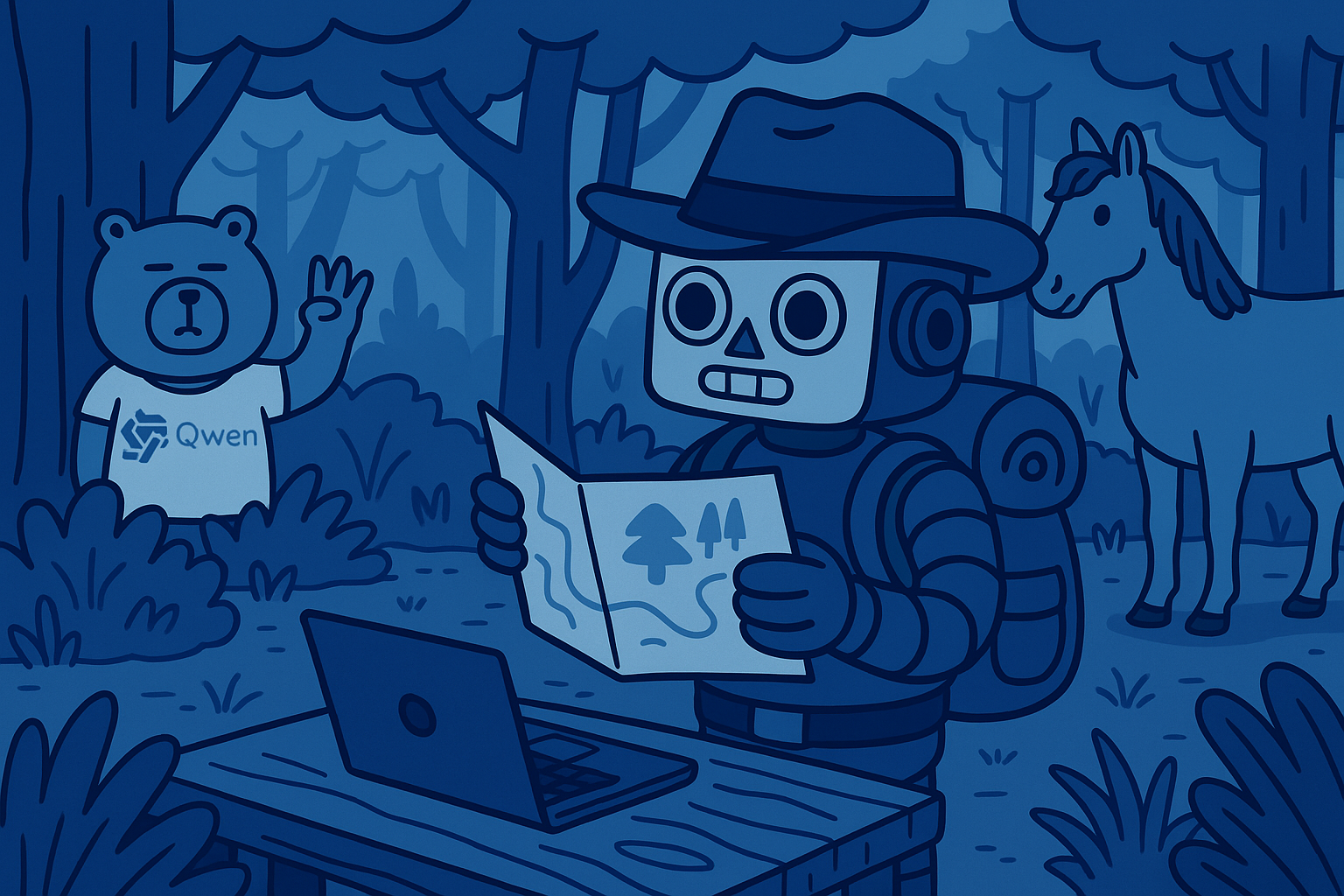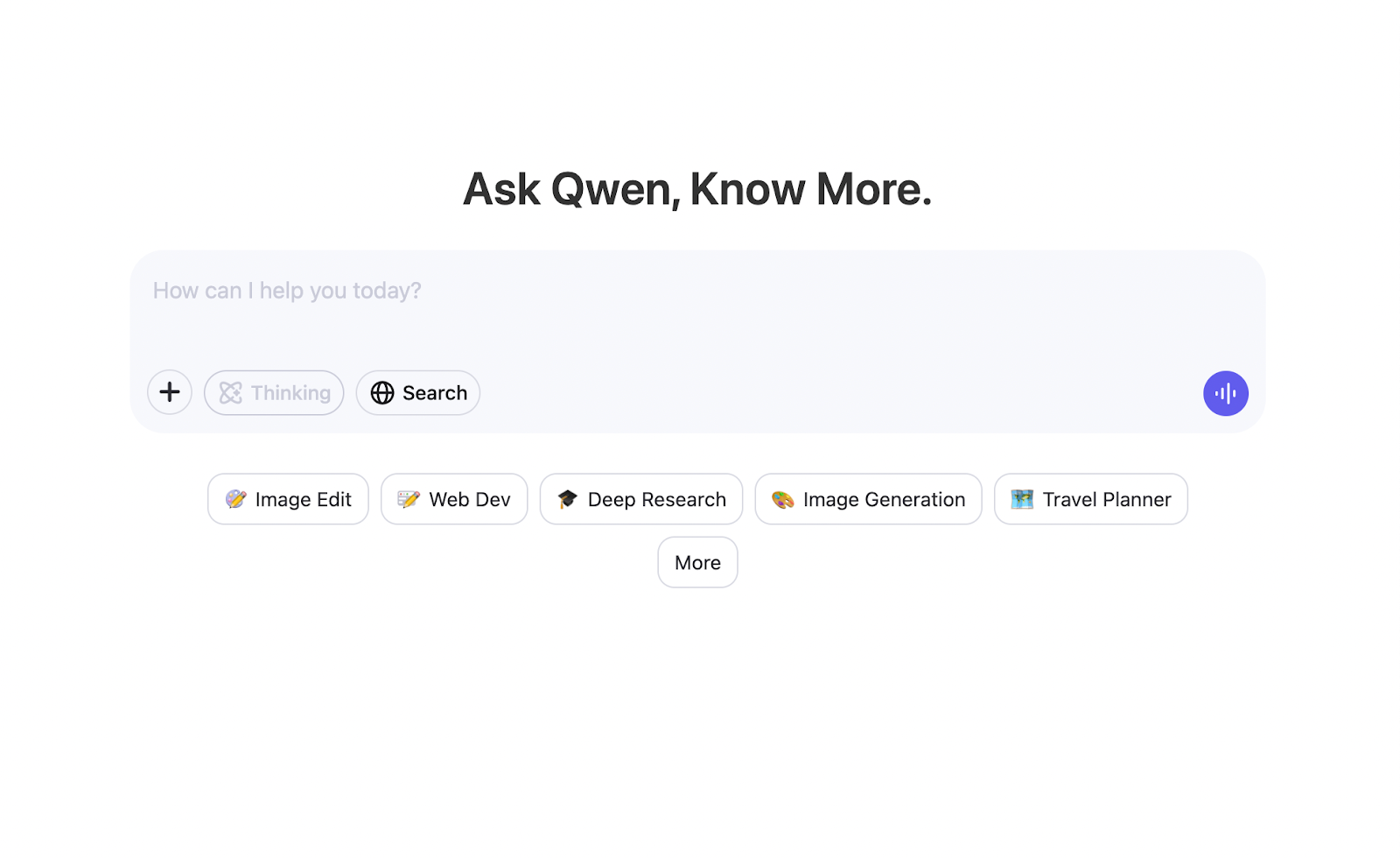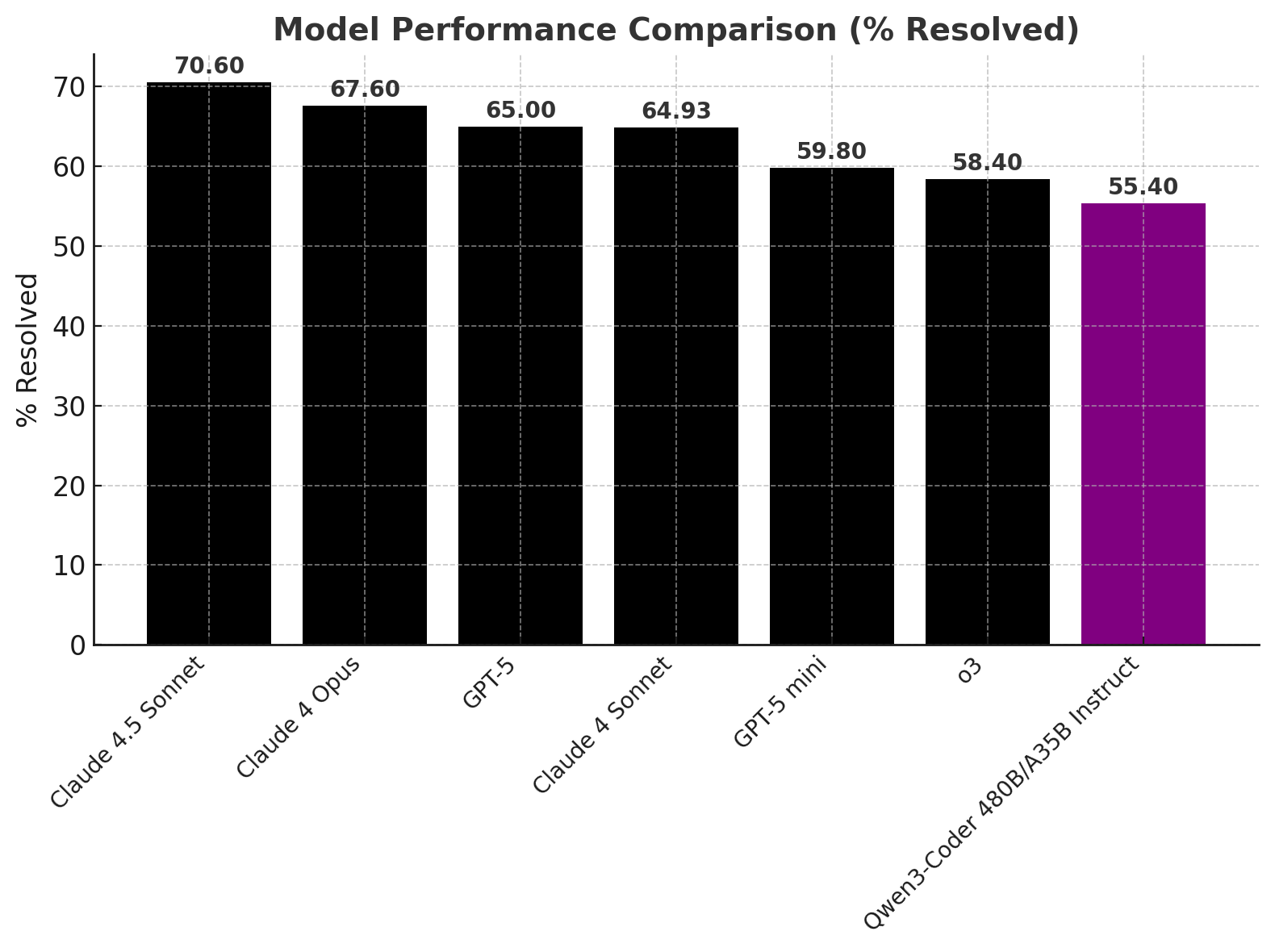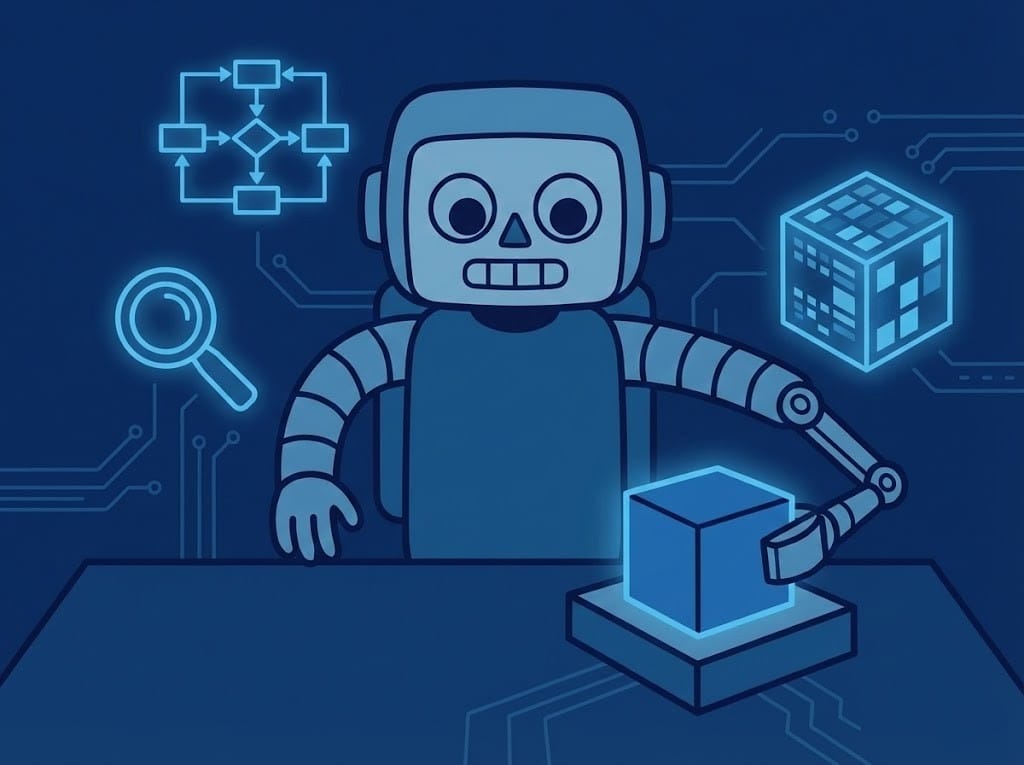Qwen3-Coder-480B-A35B-Instruct: The Open-Source AI That's Redefining Code Generation

Alibaba just dropped a 480-billion-parameter coding model that can autonomously debug, write code, and browse documentation, and it's completely open-source.
Released in July 2025 by Alibaba's Qwen team, Qwen3-Coder-480B-A35B-Instruct marks a major leap from their previous 32B model, achieving performance comparable to Claude Sonnet-4 and GPT-4 in coding tasks. But here's the kicker: anyone can use it without API fees. This democratization of advanced AI coding capabilities could fundamentally alter the landscape of software development.

The MoE Architecture Breakthrough
At the heart of Qwen3-Coder lies an innovative Mixture-of-Experts architecture that makes its massive scale practical. With 480 billion total parameters but only 35 billion active per inference, the model achieves an elegant balance between raw computational power and efficiency.
The architecture employs 160 specialized expert networks, activating just 8 of them for any given query. This selective activation means that while the model contains nearly half a trillion parameters of knowledge, it operates with the computational footprint of a 35-billion-parameter model during actual use. The system uses 62 transformer layers with gated-query routing and 96 attention heads, creating a sophisticated neural architecture that can handle diverse coding challenges without the prohibitive costs typically associated with models of this scale.
This MoE approach is about specialization. Different experts can focus on different aspects of coding, from algorithm optimization to API integration, allowing the model to excel across a remarkably broad spectrum of programming tasks.
Agentic Coding: Beyond Code Generation
What sets Qwen3-Coder apart is the model's capacity for autonomous multi-step problem-solving. Agentic in this context means the model can act as an independent software engineer, planning approaches, executing code, debugging iteratively, and even browsing documentation when needed.
The training process was revolutionary: Alibaba utilized 20,000 parallel environments to simulate real-world software engineering scenarios. This massive infrastructure allowed the model to practice not just writing code, but experiencing the full development lifecycle. It learned to:
- Interact with development tools and APIs
- Execute code and analyze outputs
- Browse documentation to understand unfamiliar libraries
- Debug complex issues across multiple files
- Iterate on solutions based on test results
On the prestigious SWE-Bench benchmark, which evaluates multi-step coding problem-solving, Qwen3-Coder achieved an impressive 55.40% success rate. This near-parity with the best proprietary models demonstrates that open-source AI has truly arrived at the cutting edge of automated coding.

The Context Window Advantage
One of Qwen3-Coder's most transformative features is its native 256,000-token context window, extendable to an astounding 1 million tokens through context extrapolation techniques like YaRN. To put this in perspective, that's enough to ingest an entire medium-sized codebase in a single session.
This massive context capability unlocks entirely new workflows:
- Repository-scale analysis: Feed in hundreds of thousands of lines of code and ask questions about architecture, dependencies, or potential optimizations
- Cross-file debugging: Track bugs that span multiple modules without losing context
- Legacy code documentation: Generate comprehensive documentation for decades-old codebases by understanding all interconnections
- Large-scale refactoring: Plan and execute sweeping changes across entire projects with full awareness of all impacts
The practical implications are profound. Traditional AI coding assistants often struggle with tasks requiring broad context, forcing developers to work in small chunks. Qwen3-Coder eliminates this limitation, enabling truly holistic code understanding and manipulation.
Reinforcement Learning Innovation
Qwen3-Coder's exceptional performance stems from two groundbreaking reinforcement learning approaches that go beyond traditional supervised training:
Execution-based RL transformed how the model learned to code. Instead of merely pattern-matching from examples, the model actively wrote code, executed it, and learned from the results. Alibaba's researchers adopted the philosophy that "all code tasks are naturally well-suited for execution-driven large-scale RL." They generated interactive coding challenges where the model's output could be automatically verified, creating a rich feedback loop that taught not just syntax, but working code.
Long-horizon RL addressed the reality that real software development rarely involves single-step solutions. The model learned to navigate complex, multi-turn debugging sessions, plan approaches, use tools, and refine solutions over many iterations. This training required massive scale; those 20,000 parallel environments weren't just for show. They allowed the model to accumulate years of simulated coding experience in a compressed timeframe.
Performance That Rivals Proprietary Models
The numbers speak for themselves. Qwen3-Coder often matches or exceeds proprietary models:
- Aider-Polyglot benchmark: 61.8% success rate across multiple programming languages
- Terminal-GPT: Slightly outperformed Claude Sonnet-4 in terminal-based coding tasks
- WebArena: Near-parity with GPT-4 in browser-assisted coding scenarios
- Language support: 358 programming languages compared to 92 in its predecessor
These aren't cherry-picked metrics. Across comprehensive evaluation suites, Qwen3-Coder consistently ranks at or near the top, often coming within a few percentage points of the best closed-source models. For many practical tasks, the performance gap between Qwen3-Coder and premium APIs has effectively disappeared.
The model's training on 7.5 trillion tokens included code and also natural language and mathematical content, ensuring it can handle the full spectrum of software development tasks, from writing algorithms to explaining complex technical concepts.
The Accessibility Factor
Perhaps the most revolutionary aspect of Qwen3-Coder is its radical accessibility. Released under the Apache 2.0 license, the model offers complete freedom for commercial use, modification, and distribution. No API keys, no usage limits, no vendor lock-in.
The deployment options are remarkably flexible:
- Cloud platforms: Available on AWS Bedrock, with managed scaling and enterprise support
- Self-hosting: Full model weights available on Hugging Face and GitHub
- Quantized versions: Community-created 4-bit and 2-bit versions that can run on high-end consumer hardware
- Multiple interfaces: From command-line tools to web UIs to API endpoints
The model has already been downloaded over 20 million times, with a vibrant community creating tools, optimizations, and integrations. Developers have successfully run quantized versions on high-end workstations using techniques like MoE offloading, making this enterprise-grade AI accessible even to individual developers.
For organizations, this accessibility translates to unprecedented flexibility. They can experiment via managed services, then bring the model in-house for sensitive projects. They can fine-tune it on proprietary codebases without sharing data with third parties. They can integrate it deeply into their development workflows without worrying about changing terms of service or escalating API costs.
Transforming the Future of Software Development
Qwen3-Coder-480B-A35B-Instruct represents a glimpse into a future where the barriers between human intention and working software continue to dissolve. By demonstrating that open-source AI can match proprietary giants in one of the most complex cognitive tasks, programming, it challenges the entire economic model of AI development.
The shift toward autonomous software development workflows is no longer theoretical. With Qwen3-Coder, we're seeing AI that can take a ticket, research the problem, write the code, test it, debug it, and prepare it for review, all while maintaining context across massive codebases. This isn't replacing developers; it's amplifying their capabilities exponentially.
For enterprises, Qwen3-Coder offers something invaluable: powerful coding assistance without vendor lock-in or data privacy concerns. In an era where code is the lifeblood of business, having unfettered access to state-of-the-art AI coding capabilities isn't just convenient, it's strategically essential.
The open-source nature of this breakthrough ensures that innovation will accelerate. As thousands of developers experiment with and extend Qwen3-Coder, we can expect rapid improvements in efficiency, new applications, and creative integrations that Alibaba's team never imagined. The future of coding isn't locked behind corporate APIs, it's open, accessible, and limited only by our imagination.



